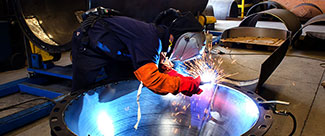CATALYST ASSESSMENT

DCL carefully considers all mechanisms involved in catalyst deterioration, to ensure the long-term performance of target emissions. DCL maintains a large database of model gas, test cell, and in-field catalyst aging data.
Ideal Surface
- Good adhesion
- Well-dispersed particles
- Similar thermal expansion coefficients of substrate and washcoat
Chemical Deterioration

- Sulphur poisoning reversible at greater than 600oC / 1110oF, caused by ZDDP (zinc dialkyl dithio phosphate)
- Lube oil poisoning by phosphorus additives (irreversible)
- Poisoning; irreversible adsorption or reaction on/with the surface
- Inhibition; competitive reversible
- adsorption of the poison precursors
Thermal Deterioration
- Sintering (re-dispersion)
- Alloying
- Support changes
- Noble metal-base metal interactions
Fouling
Mechanical Deterioration







